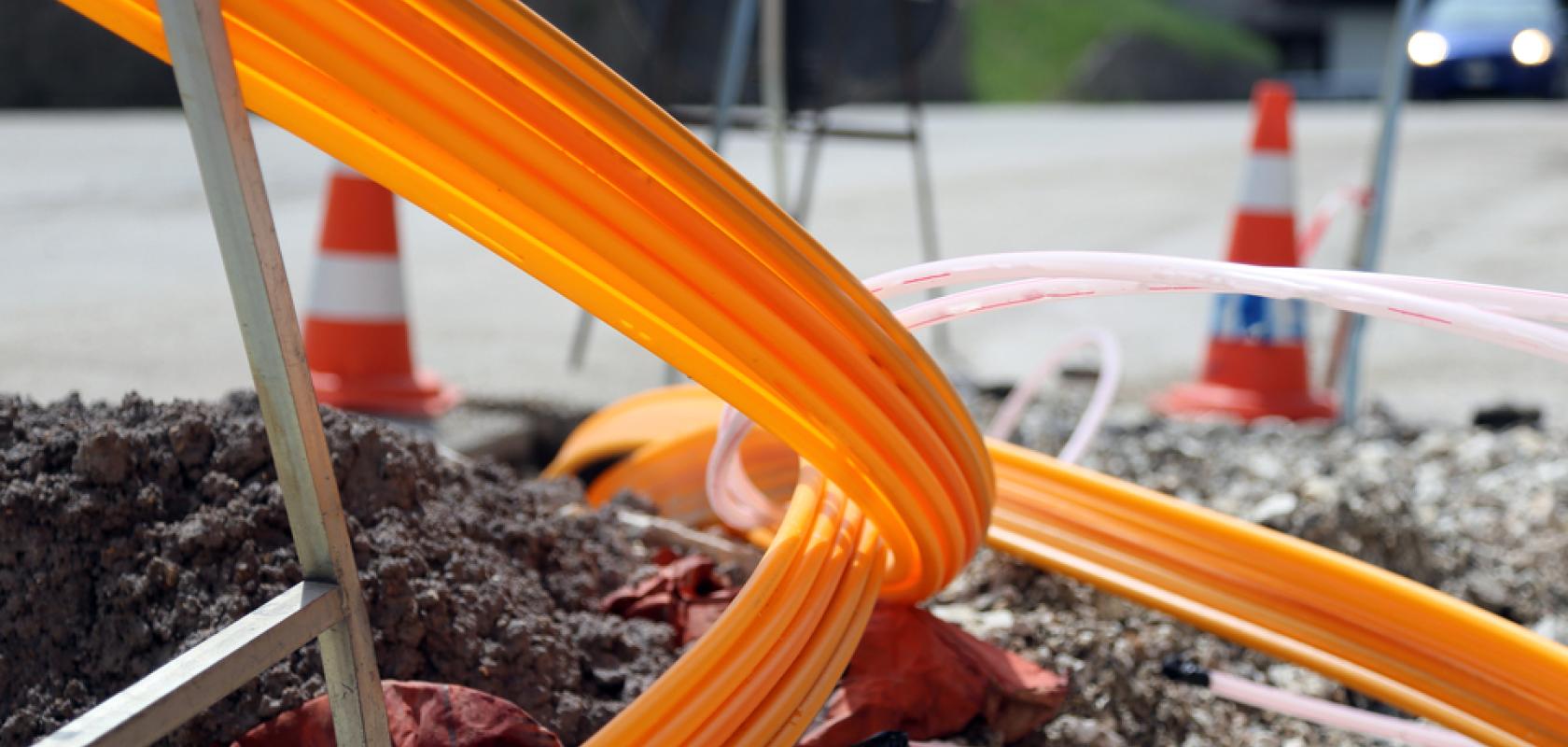Keely Portway rounds-up some of the industry's responses to the UK government’s connectivity mission in the recent 'Levelling Up' white paper
This week saw the launch – announced by UK Levelling Up Secretary Michael Gove – of the government’s ‘Levelling Up’ white paper.
The document sets out a plan to transform the UK by ‘spreading opportunity and prosperity’ to every region. It sets out a complete ‘system change’ of how government works that will be implemented to level up the UK.
Getting to the detail, the white paper lays out 12 national missions which are designed to be quantifiable and which have a target date of 2030. Looking specifically at telecoms, the commitment in the document is that by 2030, the UK will have nationwide gigabit-capable broadband and 4G coverage, with 5G coverage for the majority of the population.
This builds, said the white paper, upon the existing commitment of £5bn in funding from Project Gigabit to help bring gigabit–capable broadband to 85 per cent of theUK by 2025 – announced in 2019 by the then Chancellor of the Exchequer, Sajid Javid – and the £1bn Shared Rural Network deal with mobile operators, which aims to deliver 4G coverage to 95 per cent of the UK by the end of 2025. Although it is not clear, reading through the white paper itself, whether additional funding will be available for this particular mission.
Upon the white paper’s launch, Gove said: ‘Not everyone shares equally in the UK’s success. For decades, too many communities have been overlooked and undervalued. As some areas have flourished, others have been left in a cycle of decline. The UK has been like a jet firing on only one engine. Levelling Up and this White Paper is about ending this historic injustice and calling time on the postcode lottery. This will not be an easy task, and it won’t happen overnight, but our 12 new national levelling up missions will drive real change in towns and cities across the UK, so that where you live will no longer determine how far you can go.’
Current UK Prime Minister, Boris Johnson added: ‘It is a vision for the future that will see public spending on [research and development] increased in every part of the country; transport connectivity improving; faster broadband in every community; life expectancies rising; violent crime falling; schools improving; and private sector investment being unleashed.’

Image credit: Valentyn Volkov/Shutterstock.com
Responses from industry have been somewhat mixed following the announcement on 2 February, but it has meant that people are talking about the importance of reliable, fast connectivity, and the role of fibre in providing this. Here are the responses we have received so far from industry spokespeople:
In response
Clive Selley, CEO of UK provider Openreach welcomed the announcement. He said: ‘Better broadband is a massive catalyst for positive change. It boosts productivity, connects forgotten communities, helps people back into work and supports new sustainable business models and public services – so we’re pleased to see it's a priority for government. At Openreach, we're already investing billions of pounds to build ultrafast, ultra-reliable full fibre technology to 25 million homes by 2026 – including a big commitment to rural Britain.’
However, Selley added that more could be done, saying: ‘We've reached more than 6.5 million homes so far but finishing the job, and going even further, will need government support – for example they can act right now to speed up access to flats, social housing and private land across the country. Reaching 100 per cent of the country will also need more companies to join us and get involved in connecting rural communities with a mixture of satellite, wireless and fixed technologies.’
Greg Mesch, CEO at UK provider CityFibre also welcomed the commitment, and cited full-fibre as the best way to achieve such connectivity targets. He said: ‘We’re delighted to see the role of digital infrastructure positioned so centrally in the government’s levelling up agenda and we welcome the continued political focus it will benefit from. Full fibre is the gold standard technology on which we must all remain focused. Its speed, reliability and ability to be upgraded easily over time is what sets it apart to unleash the highest levels of economic, social and environmental benefits.
‘Thanks to the emergence of digital infrastructure competition, the industry is making great progress in its rollouts of full fibre networks. To maintain or exceed this pace, unlock productivity benefits even faster, and bring down prices for consumers, the government and Ofcom must continue to protect and nurture a healthy competitive market. With a £4bn full fibre investment programme covering nearly three hundred cities, towns and villages, and with over a million homes already able to access our world-class network, we look forward to playing an increasingly critical role supporting the levelling up mission and the UK’s wider digital transformation.’
David Hennel, business development director at provider National Broadband was fairly open in his skepticism surrounding the white paper, and highlighted that all deployable solutions should be recognised. He said: ‘The government has always had strong rhetoric when it comes to its levelling up agenda. However, when it comes to the digital connectivity of properties in rural areas, it has simply not lived up to its promises. Revised plans announced in November 2021, to provide 85 per cent of UK properties with gigabit-capable broadband were already a regression of its original 2019 pledge to provide this to every single property in the country with an investment of £5bn. To be frank, this original plan was an unachievable ‘pie in the sky’ promise – but worse, the reduced objective actually risks leaving out those most in need of help.
"Whilst it is encouraging to see mention of continued 5G rollout which does, over time, have significant potential in improving digital connectivity in rural locations and to those most digitally deprived, it’s crucial that the government looks to immediately available and viable solutions that can help bridge the digital divide. Sadly, its ‘fibre-centric’ approach has ignored cost-effective and instantly deployable solutions such as 4G to provide genuinely life-changing improved digital connectivity right now to those with the poorest broadband. If this government is serious about bridging the digital divide as soon as possible, it must look to leverage all solutions available to ensure every property can experience the benefits of improved digital connectivity, instead of just catering for “the majority”.’
Representing the voice of the UK’s mobile network providers, Mobile UK said: ‘As one of its 12 missions to level up the UK, [government] has called for nationwide 4G coverage and 5G coverage for the majority of the population by 2030. To achieve this the government must take urgent action to ensure that local authorities are provided with the right on-the-ground resources to smooth rollout and that it creates a positive investment environment to enable mobile operators to deploy its networks quickly and effectively across the country.
While there is a huge amount of positive sentiment towards 4G and 5G, there is also a challenge at the local level to address the practicalities of network build. Mobile operators continue to struggle to rollout infrastructure in local areas due to difficulties with planning, a lack of coordination or priority from local authorities, and a continued lack of understanding about the benefits that mobile connectivity can deliver.
‘With strained resources, many local authorities are not allocating sufficient priority, time and people to coordinate digital connectivity strategies. A recent report from Cluttons identified that only 45 per cent of councillors said that their local authority had a digital strategy in place and less than a third (31%) stated that their council had assigned a dedicated role of digital champion or similar. Without local leadership and a good understanding of the benefits of digital connectivity and why it is needed this leads to confusion, misunderstanding, ambivalence or an outright rejection from communities of the infrastructure required to provide the connectivity. Mobile UK is calling on the government to put in place adequate funding at the local level to assist local authorities and to fund digital champions.
‘The government must, through its Wireless Infrastructure Review, and Ofcom’s Mobile Strategic Review, consider these changing environments to ensure that those that build and provide the infrastructure that underpins our connectivity, and that will ultimately enable the government’s mission to level up, can continue to invest in the UK.’
If you would like to share your view on the latest ‘levelling up’ measures in the UK, please get in touch with us!


